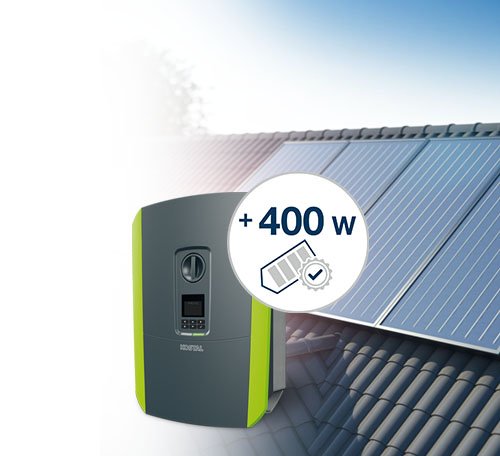This is what the new generation of 400W modules has to offer
Up to now, photovoltaic cells with an edge length of 166 mm were normally connected as a whole or as half cells in solar modules. The new cell sizes of 182 mm or even 210 mm have a new structure and change the module dimensions.
The new module with 108 half cells
For example, 108 of the new 182 mm half cells are interconnected in modules (M10 wafers) for the home environment. The larger cells make the module slightly wider (approximately 1.14 m). However, fewer cells are interconnected internally than in the previous generations with 120 half cells. Fewer cell gaps mean higher module efficiency as more active area is used. A module with 108 half cells achieves an efficiency of 20.46% with a 400W output (e.g. Suntech STP405S).
The new module with 120 one-third cells
Manufacturers who use cells with an edge length of 210 mm made of so-called M12 wafers take a different approach. For modules in the home environment, these are divided into three equal one-third cells and interconnected again to form 120 one-third cells in one module. The larger cells are structured in a new cell matrix with 5 x 24 one-third cells. Since only 5 strips of cells are then installed, the modules are approximately 1.08 m wide. With a 400W output, the module achieves an efficiency of 21.3% with 120 one-third cells (e.g. Trina Vertex S).
KOSTAL already compatible with the new generation of 400W modules
KOSTAL inverters are already compatible with the new generation of 400W modules. The PLENTICORE plus, PIKO IQ, PIKO 12-20, PIKO MP plus and PIKO CI are already perfectly equipped to handle the larger module currents of up to 13 amps.
KOSTAL’s inverter range includes the right converter and control units for every installation featuring solar modules of the new generation of 400W modules, from a small rooftop area to a larger ground-mounted system.
Why is the choice of inverter so important now?
With the new module cell sizes, the focus shifts to choosing the appropriate inverter. This is because larger but fewer cells on the roof mean a lower voltage per module and at the same time higher current movements, which the inverter must control and process in an optimum manner.
KOSTAL inverters already process the input current of the latest generation of modules with an output of 400 watts and more. This means that the entire module output can be used without the inverter having to limit the current flow – and this applies to all KOSTAL series.

